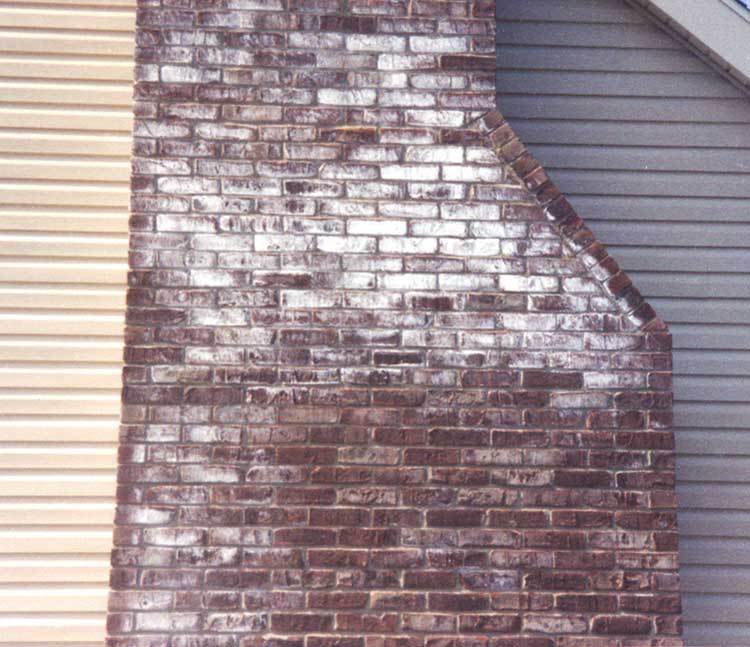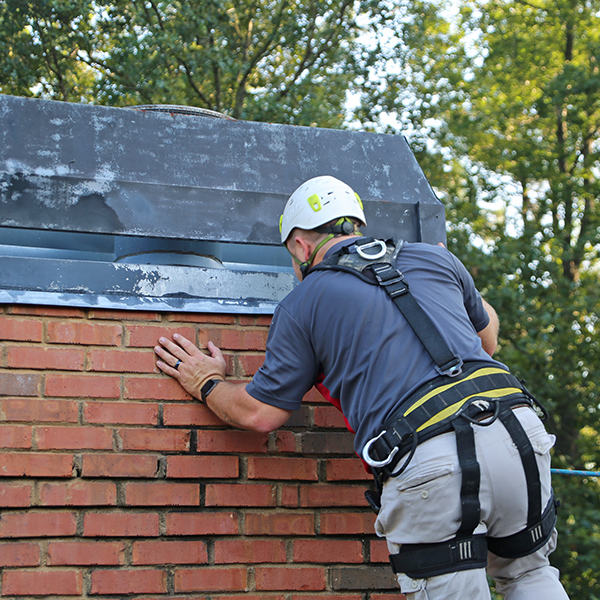Get The Facts on Efflorescence
Have you noticed a white, chalky substance coating your chimney and wondered, “What the heck is that?” Most homeowners assume this is part of the chimney’s aging process; it’s probably efflorescence, a salt deposit left after water evaporates, and commonly found on brick, stucco, and concrete. But it’s more than just a cosmetic issue; it could indicate trouble within your chimney, as we’ll see in this post.
What Causes Efflorescence? 
Efflorescence can appear inside and out, and as mentioned, it commonly appears on bricks and concrete. Efflorescence is a fine, white, powdery deposit of water-soluble salts left on the surface of masonry as the water evaporates. Three conditions cause efflorescence:
- The presence of water-soluble salts in the masonry
- Moisture contact
- Porous materials the salts can move through for evaporation
Salt is common in porous building materials like bricks, mortar, and concrete, and when these materials contact water, it begins the reaction that causes efflorescence.
Is Efflorescence Dangerous?
Although many people confuse efflorescence with mold, which presents many health concerns, it’s not dangerous to people. However, its presence could signal that you have a moisture problem within your chimney that can lead to structural damage if left unchecked.
Can Efflorescence Damage My Chimney?
Most people assume efflorescence is a cosmetic issue, which is mainly true. However, when you see this substance forming on your chimney, you have to be cautious because it could mean you have a water leak problem that’s causing the salts in the masonry materials to seep out. That moisture could be caused by rain and snow falling on the bricks, or it could be coming from internal damage. There’s no way to know for sure without a complete chimney inspection. If the efflorescence is caused by water damage and you don’t diagnose it quickly, it could lead to brick spalling, loose mortar joints, and eventually, a crumbling chimney.
How to Get Rid of Efflorescence
You can try removing this substance yourself with a brush or broom, but you might find it a losing battle depending on how extensive the coverage is and how long it’s been there. If the coverage is relatively new, it will come off easily; however, it will be much more difficult if it’s been there for years. When brushes or brooms don’t work, you may ask whether power washing will do the trick. The answer is, it might, but it’s not worth the risk, and here’s why. If you have internal or external chimney damage, the power washing pressure could make it worse. You may blast away critical mortar joints, allowing more water to get in and degrade the chimney’s structural integrity even further.
 Another method people consider is using an abrasive material with a rotary tool or sandblasting. Again, like power washing, this method puts your chimney at risk if it’s damaged. Also, if you manage to remove the efflorescence, it won’t stop it from coming back. The best bet for your chimney’s safety is to call a professional chimney repair service to inspect it to determine whether the efflorescence is merely cosmetic or if there’s an underlying issue that requires repairing.
Another method people consider is using an abrasive material with a rotary tool or sandblasting. Again, like power washing, this method puts your chimney at risk if it’s damaged. Also, if you manage to remove the efflorescence, it won’t stop it from coming back. The best bet for your chimney’s safety is to call a professional chimney repair service to inspect it to determine whether the efflorescence is merely cosmetic or if there’s an underlying issue that requires repairing.
About Us
Above & Beyond Chimney Services is a family-owned and operated company with over 25 years of industry serving homeowners throughout southern Massachusetts with top-rated chimney repair, cleaning, and maintenance.
We’re members of the National Chimney Sweep Guild, and our expert technicians are fully licensed and insured for your protection. If you live in South Framingham or the South Shore area and need chimney services, call us at 781-383-0415 or fill out our online form
